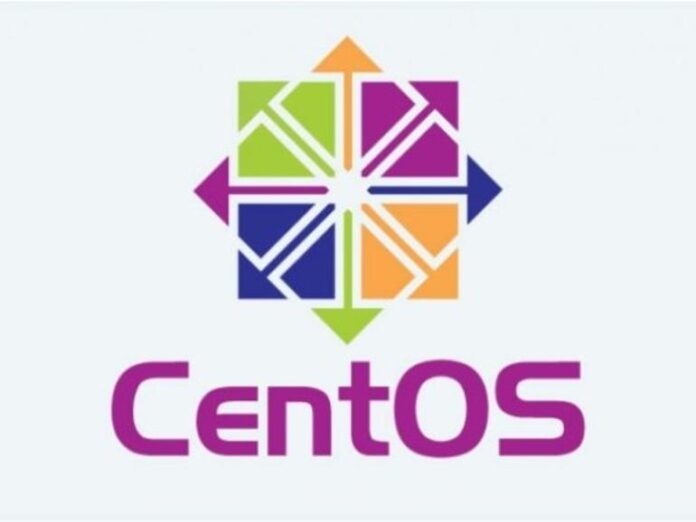When Red Hat, CentOS’s Linux parent company, announced it was shifting focus from CentOS Linux, the rebuild of Red Hat Enterprise Linux (RHEL), to CentOS Stream, which tracks just ahead of a current RHEL release, many CentOS users had fits.
On Hacker News, the leading comment was: “Imagine if you were running a business, and deployed CentOS 8 based on the 10-year lifespan promise. You’re totally screwed now, and Red Hat knows it. Why on earth didn’t they make this switch starting with CentOS 9???? Let’s not sugar coat this. They’ve betrayed us.”
Over at Reddit/Linux, another person snarled, “We based our Open Source project on the latest CentOS releases since CentOS 4. Our flagship product is running on CentOS 8 and we *sure* did bet the farm on the promised EOL of 31st May 2029.”
A popular tweet from The Best Linux Blog In the Unixverse, nixcraft, an account with over 200-thousand subscribers, went: Oracle buys Sun: Solaris Unix, Sun servers/workstation, and MySQL went to /dev/null. IBM buys Red Hat: CentOS is going to >/dev/null. Note to self: If a big vendor such as Oracle, IBM, MS, and others buys your fav software, start the migration procedure ASAP.”
Many others joined in this choir of annoyed CentOS users that it was IBM’s fault that their favorite Linux was being taken away from them. Still, others screamed Red Hat was betraying open-source itself.
Why would Red Hat do this? Chris Wright, Red Hat’s CTO, said when CentOS Stream was introduced, “developers … require earlier access to code [in September 2019], improved and more transparent collaboration with the broader partner community, and the ability to influence the direction of new RHEL versions. It is these opportunities that CentOS Stream is intended to address.”
In short, one reason was to open up Red Hat Enterprise Linux’s (RHEL) code. Karsten Wade, an original CentOS board member, longtime Fedora Linux contributor, and a Red Hat senior community architect doubled down on this explanation in a blog post:
The development of RHEL itself still remained closed behind the Red Hat firewall. This had been true for almost twenty years. For the open-source development ecosystem, this has been an important and often painful gap—it’s the still same openness gap as 2003.
This brings us to today and the current chapter we are living in right now. The move to shift the focus of the project to CentOS Stream is about filling that openness gap in some key ways. Essentially, Red Hat is filling the development and contribution gap that exists between Fedora and RHEL by shifting the place of CentOS from just downstream of RHEL to just upstream of RHEL.
And, yes that is true. Part of what’s going on here is Red Hat making the final, important steps between Fedora and RHEL open. Another official part of it is, as Wright said, is that CentOS Stream as a “rolling preview” of what’s next in RHEL, both in terms of kernels and features can be used in today’s containerized, cloud-native IT world. After all, Facebook already runs its millions of servers on CentOS Stream derived Linux operating systems.
Thus, Wright continued, while “CentOS Stream isn’t a replacement for CentOS Linux; rather, it’s a natural, inevitable next step intended to fulfill the project’s goal of furthering enterprise Linux innovation.” Yes, CentOS Stream isn’t a stable point server Linux distro that you can run for years, but it is what cloud-centric companies need to deploy “containerized applications and cloud-native services to rapid hardware innovations and ecosystems shifting to Software-as-a-Service (SaaS). … This is where we see CentOS Stream fitting in. It provides a platform for rapid innovation at the community level but with a stable enough base to understand production dynamics.”
And, that’s true too. But, they’re not the whole story. Here’s the real reason why Red Hat is putting the old-school fixed release CentOS out to pasture.
Red Hat hasn’t been talking about this aspect much at all, but Mike McGrath, Red Hat’s VP of Linux Engineering, let the cat out of the bag in an interview with Christine Hall in ITPro Today. “I would say the big one for us was that CentOS itself was not actually providing that much usefulness to Red Hat. Most of the communities we set up, Fedora, for example, do have a lot of bidirectional community involvement. Unfortunately, CentOS was never like that. It was always a community of users, so that contribution model was mostly one way.”
Let me repeat that. “CentOS itself was not actually providing that much usefulness to Red Hat.” It never has. And, there are a lot of senior Red Hat people who’ve known that since day one and they haven’t liked it one damn bit.
Do you know who uses CentOS? A shortlist includes Disney, GoDaddy, Rackspace, Toyota, and Verizon. Still, dozens of other companies build products around CentOS. These include GE, Riverbed, F5, Juniper, and Fortinet. How much money does Red Hat make from these CentOS “customers?” That would be zero.
On the CentOS blog, one disgruntled user said “The entire premise and the only reason anyone uses CentOS is because it’s rebuilt RHEL. Congratulations on undermining that, nitwits.”
Exactly and that’s the biggest reason why CentOS is being retired for CentOS Stream.
No one at Red Hat was willing to go on record saying this, but numerous Red Hat executives told me that this was the case.
One said, “It had almost nothing to do with IBM. We were talking about it in detail before the news of the acquisition even hit in Fall 2018. There were two internal reasons. First, engineering and sales could not for the life of them figure out how to position CentOS in their respective portfolios. And, the idea of turning CentOS into an upstream began in 2014 when Jim Perrin [now a Microsoft Principal Program Manager and former Red Hat developer and CentOS Board member] talked about the possibility at a International Free Software Forum (FISL) talk in Brazil in 2014. The result was CentOS Special Interest Groups (SIG), which were the start of the road to CentOS Stream.
A former Red Hat executive confided, “CentOS was gutting sales. The customer perception was ‘it’s from Red Hat and it’s a clone of RHEL, so it’s good to go!’ It’s not. It’s a second-rate copy.” From where, this person sits, “This is 100% defensive to stave off more losses to CentOS.”
Still another ex-Red Hat official said. If it wasn’t for CentOS, Red Hat would have been a 10-billion dollar company before Red Hat became a billion-dollar business.
Yet another Red Hat staffer snapped, “Look at the CentOS FAQ. It says right there:
CentOS Linux is NOT supported in any way by Red Hat, Inc.
CentOS Linux is NOT Red Hat Linux, it is NOT Fedora Linux. It is NOT Red Hat Enterprise Linux. It is NOT RHEL. CentOS Linux does NOT contain Red Hat® Linux, Fedora, or Red Hat® Enterprise Linux.
CentOS Linux is NOT a clone of Red Hat® Enterprise Linux.
CentOS Linux is built from publicly available source code provided by Red Hat, Inc for Red Hat Enterprise Linux in a completely different (CentOS Project maintained) build system.
We don’t owe you anything.”
This may make some of you really angry at Red Hat. Before you go there, though, let me ask you something. How much do CentOS “customers” contribute to CentOS? I’m not talking about money. I’m talking about code, documentation, and support. All that stuff open-source communities are supposed to give back. The answer: Close to nothing.
Dick Morrell, who works with security at CentOS, tweeted: Community [is] defined by cooperation and interaction. If @CentOSProject was a community built residential development it would enjoy extensions and floors and features contributed by those who benefit and use its facilities.” Morrell continued, “However @CentOSProject has been the benevolent gift that kept giving and those complaining now never came forward with bricks cement or glazing to extend that proposition.”
Can you really blame Red Hat for doing what a business should do? Make money while serving their paying community? I get why people are vexed with Red Hat. It miscommunicated badly. Cutting CentOS 8 support with only a year’s warning justifiably bought it a lot of resentment. But if you’re one of those people who are furious now at Red Hat, before you get too self-righteous, you might want to look in the mirror first and consider how much you’ve given back to CentOS.
Finally, if you still can’t stand what Red Hat’s done with CentOS, there are other Linux alternatives. And, there are at least two “classic” CentOS builds, CloudLinux’s Project Lenix and Rocky Linux for you to consider.





